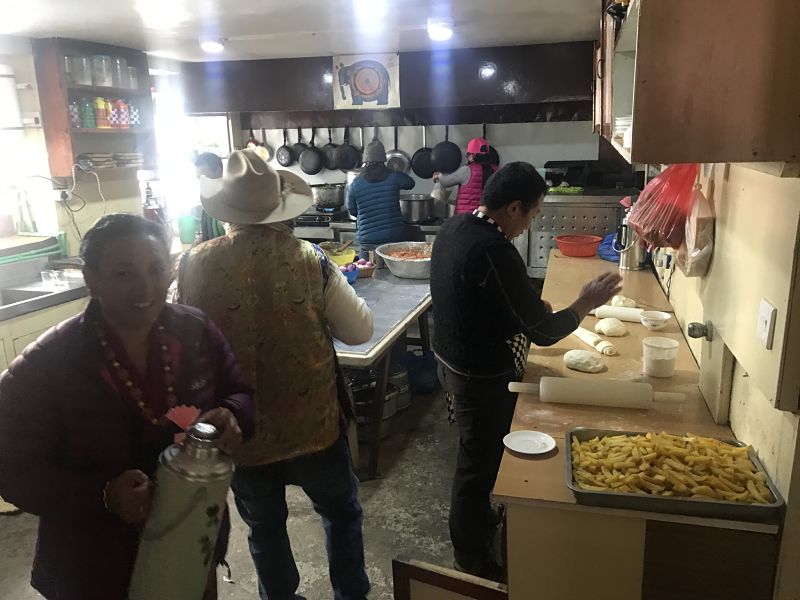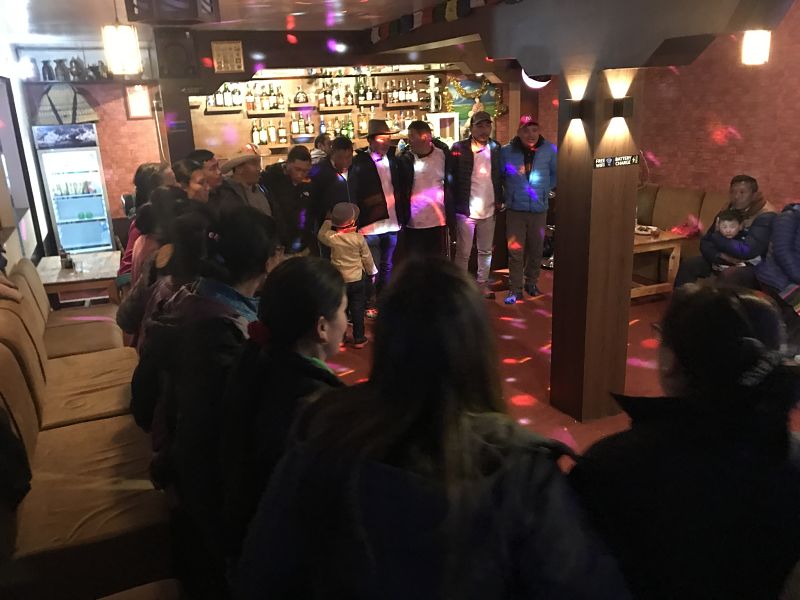In Nepal there are more than 60 ethnic groups, and this means that there are up to nine dates, and consequently nine different celebrations, of the New Year. The main one is that of Nava Varsha (Nepali New Year), which corresponds to the Bikram Sambat (official Nepalese calendar) which has its origin in the Hindu calendar. This year will be celebrated on April 14, the date when will begin the year 2077.
As the Buddhists, and the Sherpas among them, follow the Tibetan calendar, they celebrate Losar, which means New Year in the Sherpa language. And to make it a little more difficult for Westerners to understand, they have two dates for this celebration, albeit with identical duration and rituals.
The first is Sonam Losar, which is celebrated on the first day of the last month (Gyal) of the Tibetan calendar, which was this year on January 25. This is the date when Sherpas in the agricultural area are used to celebrating it, since in many places agricultural work begins in February.
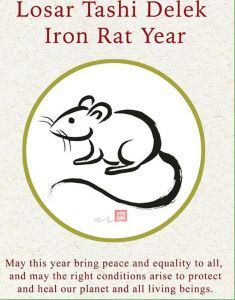
The Tibetan Iron Rat year 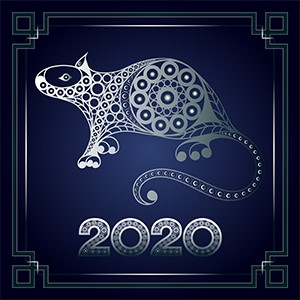
The Iron Rat year
The second date is that of Gyalpo Losar, which is celebrated on the first day of the first month (Chu) of the Tibetan calendar, and this year was on February 24, which marked the beginning of the year 2147, designated as the year of the iron rat. This is the date especially celebrated by religious people, officials and people employed in the services and industry, as well as the many Sherpas who live or spend the winter in Kathmandu.
From a Western perspective, it seems a little strange to celebrate the same event based on the same calendar, in two different dates. But there is also a feeling among Sherpas communities that it should be unified on a single date.
In mid-February, I had just returned to the Khumbu to begin the second period of my project, and this allowed me to keep a close eye on the Gyalpo Losar celebrations in Namche, which is the only village in the Khumbu area to celebrate it in these dates. The other villages had already celebrated it by the end of January.
AND HOW DO THEY CELEBRATE THE ARRIVAL OF THE NEW YEAR?
The celebration lasts 3 days. On the first day the families do a thorough cleaning of the whole house. It is the day to clean the soot that has accumulated on the ceiling throughout the year as a result of fires with firewood or yak dung, and the bad or non-existing evacuation of smoke. Today this has greatly diminished due to the progressive replacement of firewood and excrement by electricity or gas cylinders. However, the tradition is preserved and used for general cleaning. Garbage, inside bags , is taken out of the house and deposited at the closest intersection of streets or trails nearby the house, where they are collected by the garbage collection staff, who nowadays operate almost in every village (see post 4 – Keep the Khumbu clean! http://sherpalifeproject.com/maintain-el-khumbu-net/).
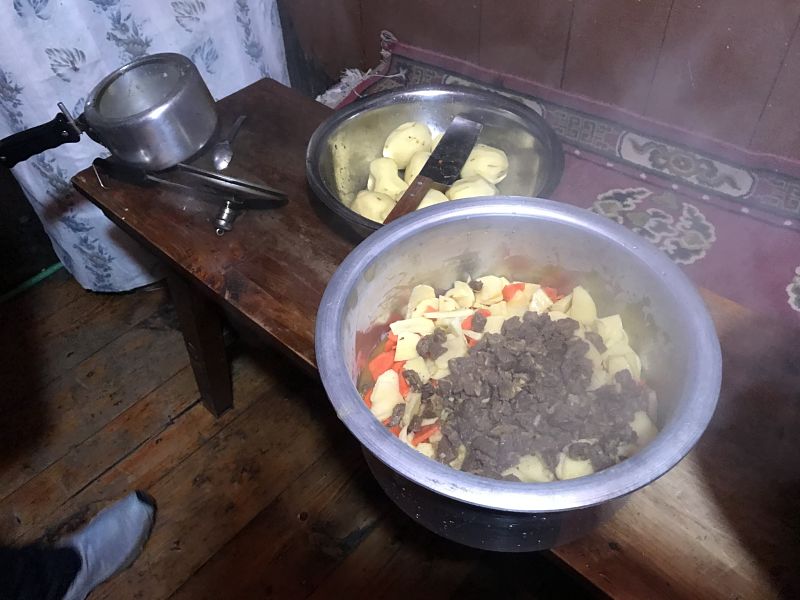
Preparing the gu thuk 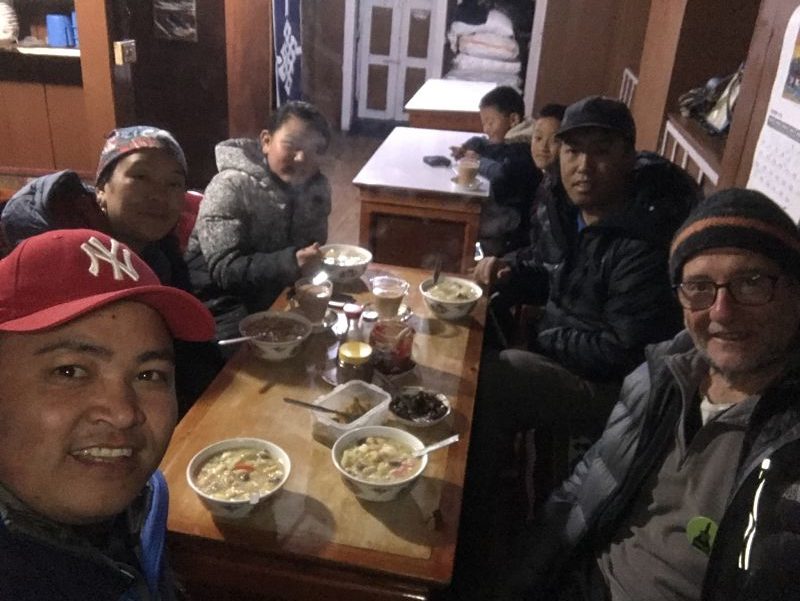
Dinner with family and friends
For the first day’s dinner, families prepare a stew called gu thuk, which consists of nine different ingredients: potato, carrot, beef, rice, radishes, spinach, dried beans, corn, and a few pieces a rice flour pasta. When cooked, they take some broth and a small potato, put it in a cup and offer it to the gods. Once the offering is made, family and guests sit at a table and share gu thuk.
The second day is a family day at home. In the evening, New Year’s Eve, they light candles, eat khapse (fried pasta made with rice flour), nuts and candies. The first pieces of khapse are also kept to be offered to the gods.
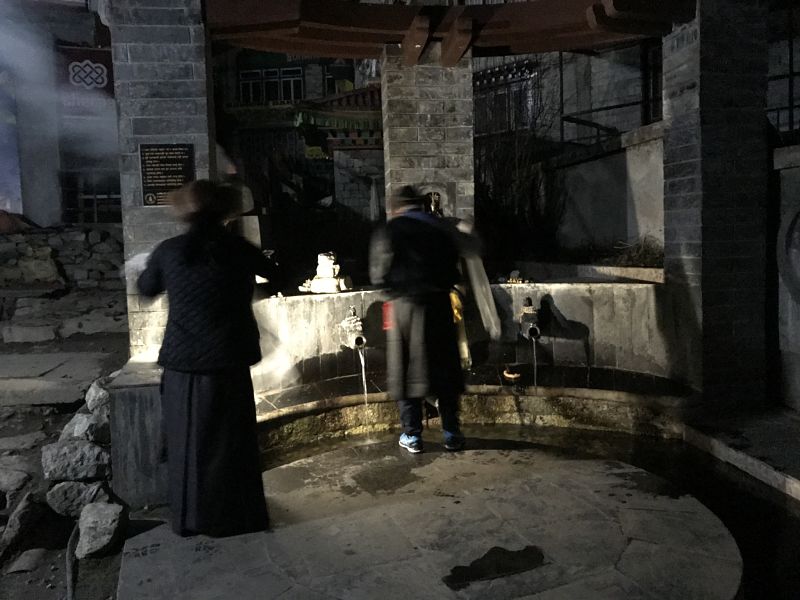
Morning offering at the fountain 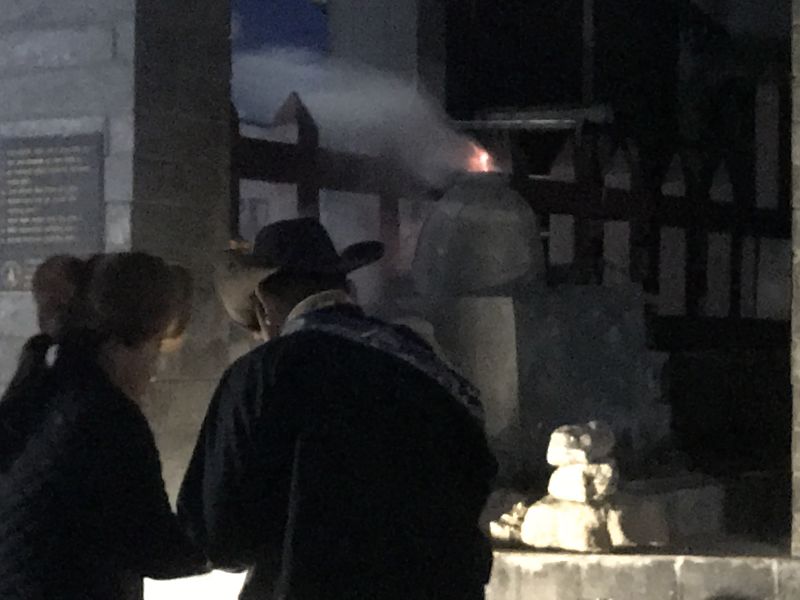
Burning incense
The third day, New Year’s Day, starts very soon. At 2 or 3 in the morning they make the burn the first incense at home and then go to the village fountain where they burn more incense, make an offering to the gods with the food and drink they have kept and fill a kettle (sangshu) with water from the fountain which, once home, will also offer to the gods for good luck.
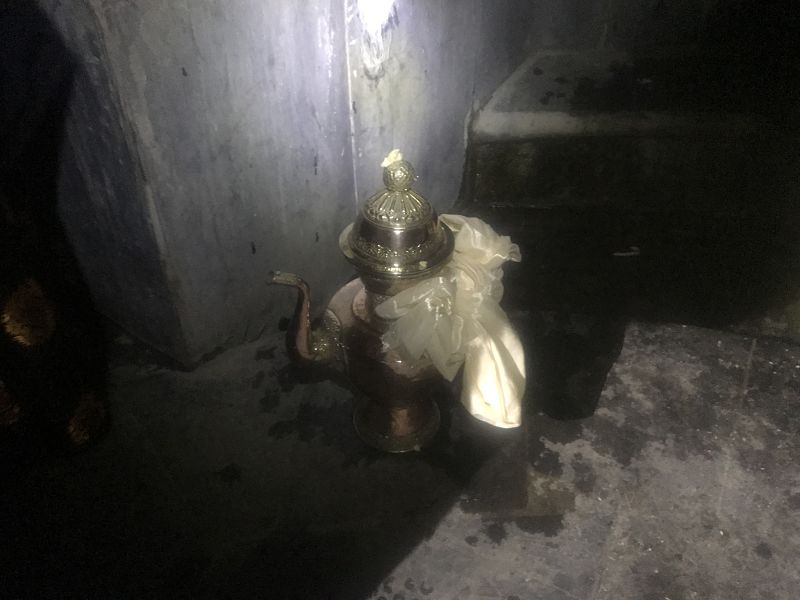
A sangshu to take water to home 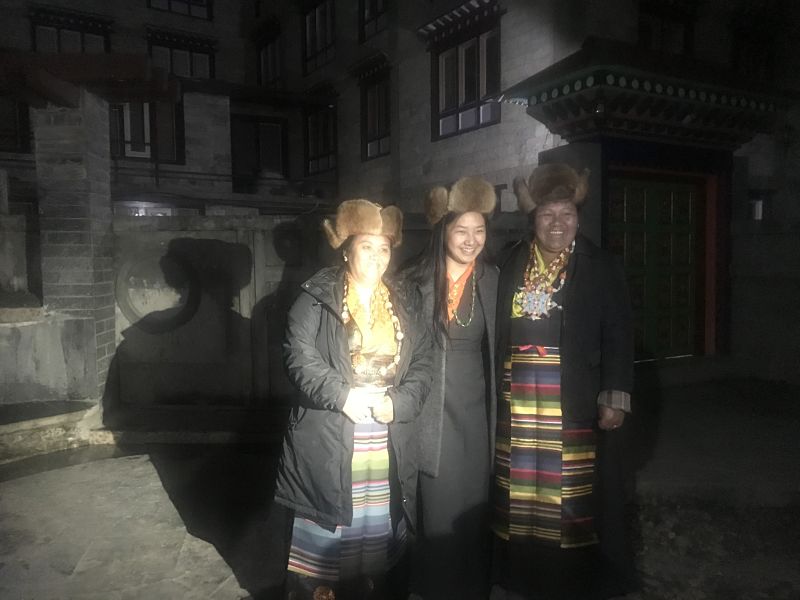
Singing and dancing in the dawn
At the fountain, families, in addition to making offerings, eat khapse and candy, invite families that are there at the time, pinch flour on their shoulders as a wish for good luck, distribute katas, and some even dance their traditional dances.
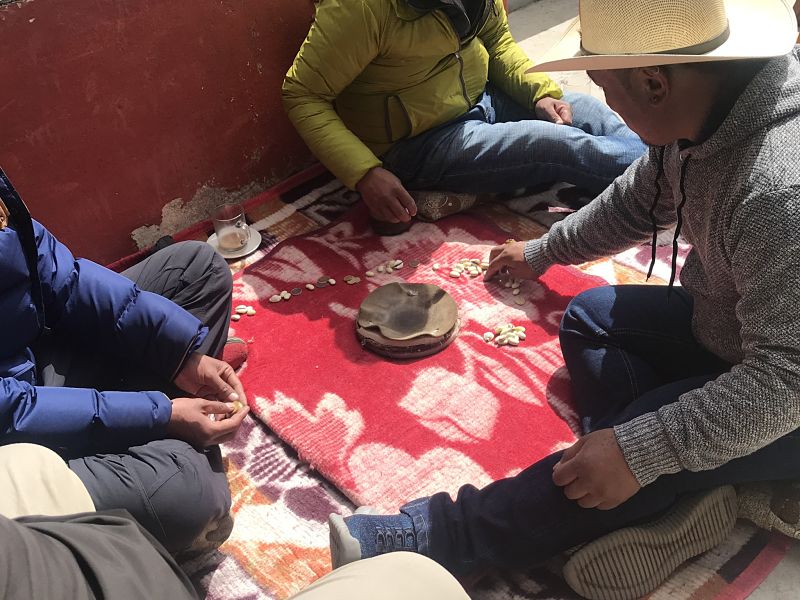
Playing dice 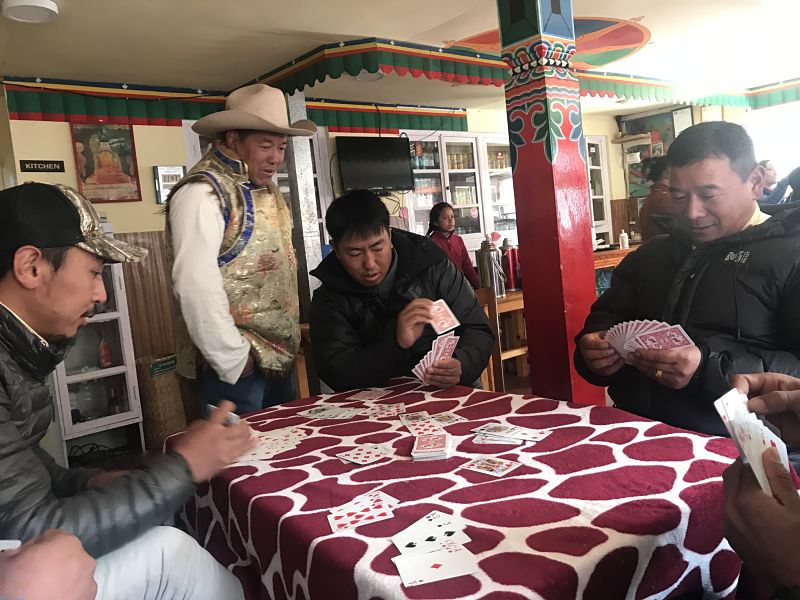
Playing cards all the day
Late in the morning, the Losar Party (New Year’s Party) begins in a village centre, where the village families gather and spend the day playing cards or dice, eating, drinking, to finish, late into the night, with their traditional dances.
In Kathmandu, I was told, New Year’s day is a family day and it is on the Friday of the same week that different Sherpa groups in the city organise their Losar Party in different venues, where, on in some cases, more than 400 people may gather.
Here in the Khumbu there is a tradition that extends the celebration of the Losar beyond three days. Every evening, a household in the village invites other neighbours to their home to celebrate the New Year and offer them food and drink. And so, day after day these celebrations take place, which, as you can imagine, can last for weeks.
Since it is winter, nobody can’t work here in the countryside and there are few tourists, there is little to do. That is why these dates are ideal for community meetings before the spring season arrives, when there is no time for community gatherings, and in many cases, for family life.
Let me end with three of the New Year’s greetings I have heard or read most:
Happy Losar!
May the year of rat bring you good health, success, joy and happiness.
May this year bring peace and equality to all, and may the right conditions arise to protect and heal our planet and all living beings.
